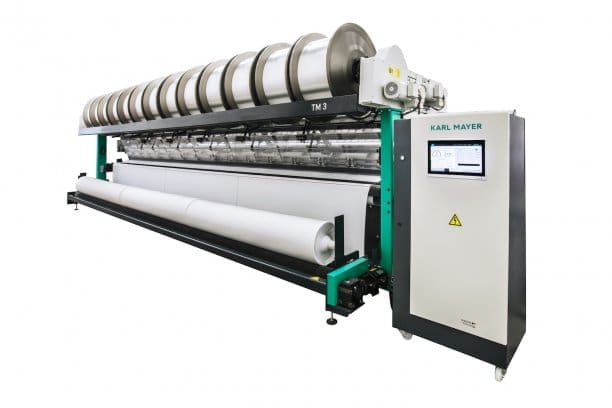Karl Mayer’s TM 3 290” tricot machine has proved to be a hit in China. By the end of October 2020, the company had sold over 350 machines. The forecasts for the following months assume that demand will remain high. Karl Mayer offers solutions for warp knitting and flat knitting, technical textiles, warp preparation for weaving, and digitalisation.
The innovative tricot machine is mainly used for the manufacture of rigid and elastic velour and raised articles for clothing and furniture. The bestsellers include various velour articles, suede leather, or articles with a cotton look. At ITMA 2019, Karl Mayer’s HKS 3-M ON was successfully introduced to the market as high-tech model of the latest tricot machine generation. With the TM 3, the basic machine range will follow in the generation change. The new TM 3 is characterised by a further optimised price-performance ratio. With a working width of 280” which can be extended by 10”, it is much wider than its predecessor with 180” and/or maximum 186” and just as fast, according to Karl Mayer.
The extra width available also increases flexibility when producing several fabric lines. The number and width of the textile strips can be varied in a higher band width. The TM 3 offers further versatility, thanks to its ability to process elastane. For this purpose, the standard version is modified by an optional unit for the guiding and tension monitoring of the elastic yarns in the ground guide bar GB 3. In particular for the manufacturers of elastic velour articles, this equipment variant might be extremely interesting, Karl Mayer said in a media statement.
As a further option, the standard 32” beam superstructure for the ground guide bar GB 1 can be replaced by an 40” variant when using DTY yarns. The longer running length maximises the beam change intervals and, thus, minimises downtime. In addition, like all machines of the third generation, the new TM 3 offers the features of KAMCOS 2 and the advantages of bars made of carbon fibre reinforced plastic. The high-tech material is extraordinarily light and provides a temperature stability that meets the requirements of the high working width. The spring elements of the tension rail could also be optimised by a solution of fibre-reinforced plastic. The result of this improvement is maximum effects when compensating yarn tensions and, thus, a smooth yarn run-in as an important prerequisite for an exact fabric appearance. The machine with the extraordinary performance at an excellent price is offered in gauges of E 28 and E 32. The patterning is done by an N-gear, Karl Mayer said.

